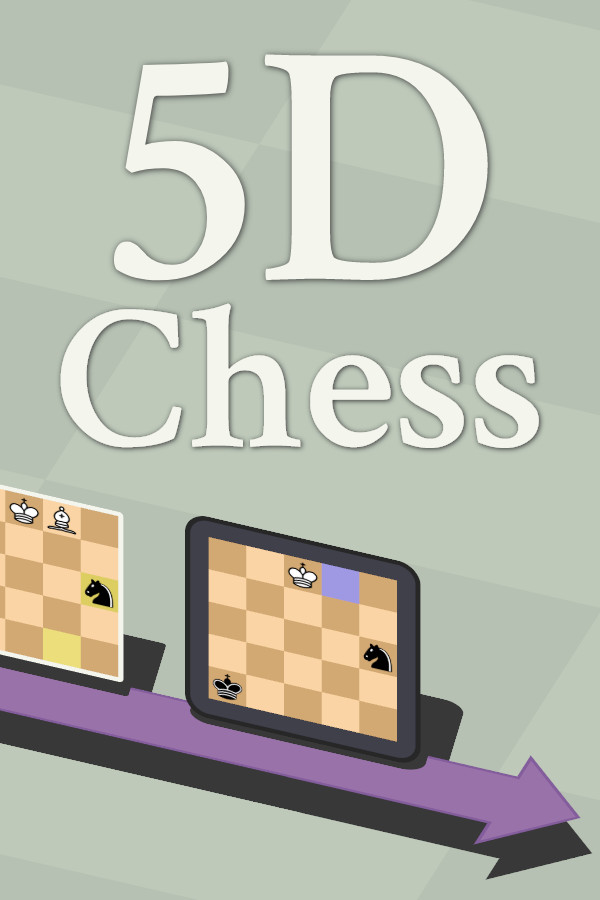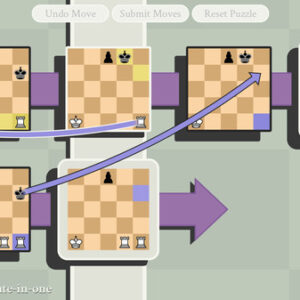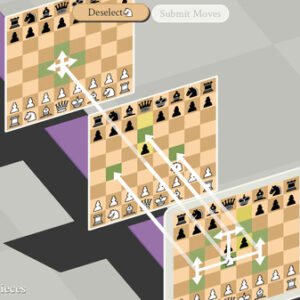5D Chess With Multiverse Time Travel Free Download Direct Steam-Cracked
Chapter 47: The Tactical Depth of 5D Chess
Multiverse Strategy: The Art of Managing Multiple Timelines
One of the most exciting aspects of 5D Chess with Multiverse Time Travel is the way it forces players to think not just in terms of moves, but in terms of entire parallel universes. The key to mastering 5D Chess is not just anticipating the immediate future but preparing for multiple futures simultaneously. The multiverse nature of the game means you need to be aware of the consequences of every move not only within the current timeline but across all created timelines.
Here are a few core strategies that players use to manage this complex web of timelines:
-
Parallel Threading: This strategy involves making parallel moves in multiple timelines. Players can move a piece in such a way that it becomes a multi-dimensional thread, impacting different timelines simultaneously. This can force your opponent to respond to threats across multiple timelines, making it difficult for them to defend effectively.
-
Timeline Convergence: A powerful tactic is to manipulate the timelines to converge at a critical moment. This is when a player sets up multiple timelines that will eventually meet in one timeline, often resulting in a devastating blow to the opponent. Timeline convergence allows for an attack that affects multiple different timelines at the same time.
-
Decoy Timelines: A clever player might create decoy timelines, where one timeline appears to be the primary battlefield while the player secretly focuses on another timeline. The opponent, overwhelmed by the apparent importance of the decoy timeline, may commit their pieces to defending it, leaving the real threat unguarded.
Temporal Chess Psychology: How Time Affects Strategy
A unique aspect of 5D Chess is the psychological impact that time travel and parallel universes have on players. Traditional chess requires deep concentration on the current board state and the future implications of moves. In 5D Chess, the player’s mental load is amplified, as they must not only predict future developments in the game but also consider the past and its effects on the present and future.
-
Temporal Fatigue: Players must balance their focus on multiple timelines, leading to a type of mental exhaustion that is unfamiliar in traditional chess. Managing the mental load of dealing with multiple parallel universes requires a higher level of concentration. As players become more experienced, they develop ways to compartmentalize their thoughts, but new players may find themselves overwhelmed by the sheer complexity.
-
Anticipating Paradoxes: The psychological challenge of avoiding time paradoxes is also a critical element of 5D Chess. The anticipation of potential paradoxes—where moves disrupt the flow of cause and effect—forces players to constantly evaluate whether their plans are sustainable across multiple timelines. A slight miscalculation can lead to a collapse of strategy, and a paradox can even result in a stalemate.
Chapter 48: The Evolution of 5D Chess: From Niche to Mainstream
From Indie Game to Digital Phenomenon
When 5D Chess with Multiverse Time Travel was first introduced in 2020, it was primarily seen as an experimental indie game—a concept that explored the intersection of chess and time travel. Its release initially targeted niche audiences, particularly fans of complex board games, puzzle enthusiasts, and players interested in non-traditional gaming experiences. However, 5D Chess quickly gained traction within the gaming community for several reasons:
-
The Rise of Strategy Gaming: With the increasing popularity of complex strategy games and puzzles, players were looking for something that challenged their thinking and required them to develop new skills. 5D Chess offered exactly that—a challenge beyond conventional chess, blending the elegance of chess with the depth of time travel mechanics.
-
Twitch and Streaming Platforms: The game’s unique gameplay mechanics made it perfect for streaming. Platforms like Twitch and YouTube helped spread the game’s reach as players from all over the world showcased their mind-bending strategies. The combination of visual complexity and the mental challenge of the game made it appealing to viewers, who enjoyed watching the gameplay unfold in real time.
-
Viral Moments: Several memorable moments, such as time paradoxes, creative strategies, and unpredictable victories, went viral on social media and gaming platforms, further fueling interest in 5D Chess. These viral moments captured the imagination of gamers who wanted to dive deeper into the game.
The Role of Online Communities in Shaping 5D Chess
The game’s online community has been instrumental in shaping its development and popularity. 5D Chess has given rise to various online communities where players share strategies, puzzles, and discuss the nuances of time travel chess. These communities often engage in lively debates about optimal moves, advanced strategies, and theoretical game mechanics.
-
Puzzle Solvers: Players in these communities often come together to solve extremely difficult puzzles that involve moving pieces across multiple timelines. The community-driven nature of these puzzles has allowed for the discovery of incredibly complex moves that can challenge even the most experienced players.
-
Mods and Customizations: Just like traditional chess, 5D Chess has seen a growth in modifications and custom game modes. Some mods introduce new pieces, game rules, or even incorporate elements of fictional universes, such as integrating characters from popular culture into the game. This flexibility allows players to customize their experience and keep the game feeling fresh.
Chapter 49: How 5D Chess Challenges Traditional Chess Skills
A Shift in Focus: From Tactical to Temporal
The biggest shift when transitioning from traditional chess to 5D Chess with Multiverse Time Travel is the movement from tactical play to temporal awareness. In traditional chess, players focus heavily on short-term tactics—such as attacking, defending, and controlling key squares. While long-term strategy certainly plays a role, the game primarily unfolds in the present, with little consideration for the past or future.
In 5D Chess, however, players must constantly evaluate the entire timeline of the game. This introduces a shift in mindset from just considering the immediate moves to thinking about how the entire multiverse of timelines will unfold. 5D Chess is less about reacting to individual pieces and more about managing the overarching flow of events in multiple universes.
How Experienced Chess Players Adapt to 5D Chess
For traditional chess players, adapting to 5D Chess requires a significant shift in approach. The game encourages a more long-term strategic mindset, where players must anticipate the implications of their actions across many timelines. Here’s how experienced players may adapt to the game:
-
Learning to Think in Multiple Dimensions: Traditional chess requires players to think in two dimensions—up and down (files and ranks). In 5D Chess, players must consider four dimensions—spatial (x, y, z) and temporal (t). This requires a more abstract way of thinking, as players need to simultaneously manage the current board, the future, and alternate universes.
-
Managing Complexity: Traditional chess emphasizes simplicity in tactics, relying on principles like central control, piece development, and pawn structure. In 5D Chess, these principles still apply, but players must also consider the interplay of timelines, piece movement across time, and the constant need to avoid paradoxes.
-
Patience and Long-Term Planning: Patience becomes even more critical in 5D Chess, where long-term strategies unfold over multiple timelines. Experienced players must embrace a mindset that goes beyond individual moves, allowing them to anticipate several possible futures at once.
Chapter 50: The Cultural Impact of 5D Chess
Chess as a Reflection of Time Travel in Pop Culture
In many ways, 5D Chess with Multiverse Time Travel reflects a broader cultural fascination with time travel and its implications. Time travel has been a central theme in countless films, TV shows, and literature. From Doctor Who to Back to the Future, time travel stories have long captured the imagination of audiences. 5D Chess taps into this cultural zeitgeist by offering a playable experience that explores the mechanics of multiversal time travel.
For fans of science fiction, the game presents an opportunity to engage with time travel in a completely different way: not through the lens of narrative but as a strategic exercise that challenges the very fabric of causality.
SYSTEM REQUIREMENTS
- OS: Windows 10, 8.1, 8, or 7. 64-bit.
- Processor: 2Ghz or better.
- Memory: 512 MB RAM
- Graphics: OpenGL 3.3 compatibility (everything since about 2010).
- Storage: 50 MB available space
Game Insights
- Genre: Indie
- Developer: Conor Petersen, Thunkspace, LLC
- Platform: PC
- Game Size: 51 MB
- Released By: N/A
- Version: v1.1.00f-7-16 | Full Version
- Full PC Games


